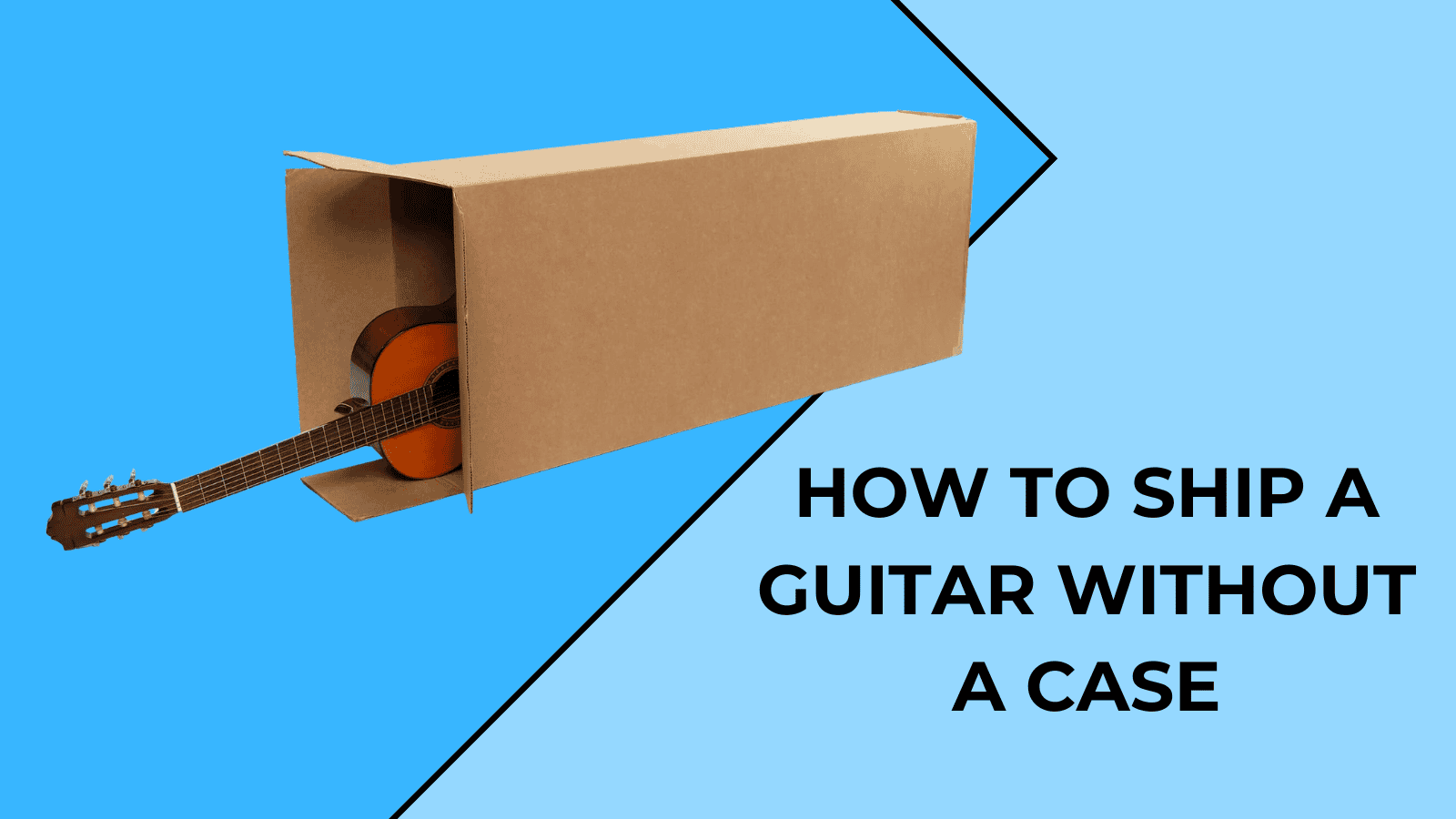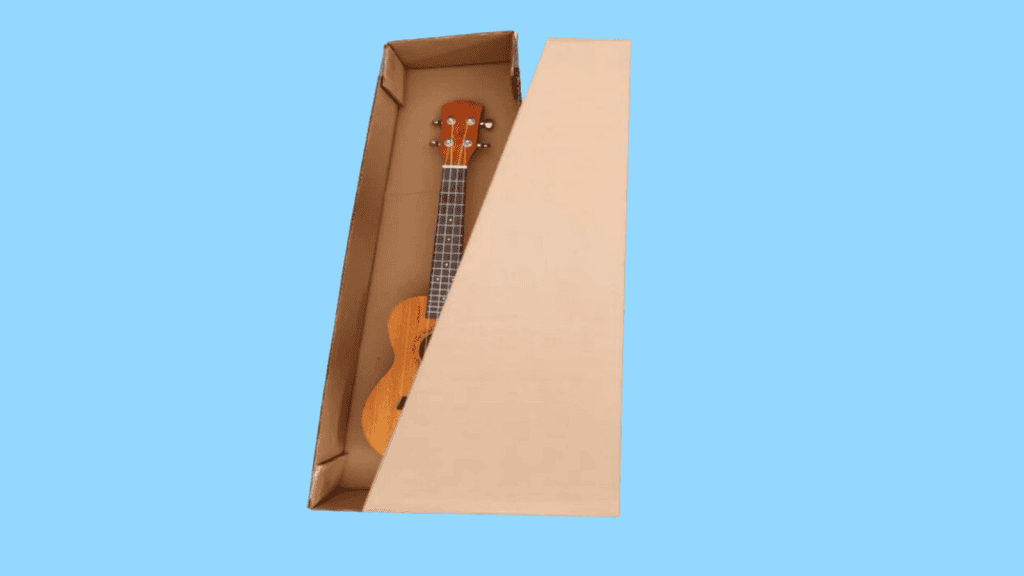How to Ship a Guitar Without a Case Safely and Affordably

Shipping a guitar without a case may sound like a risky move, but sometimes you find yourself in a situation where you have no other option. Maybe you sold your guitar and the buyer doesn’t want the case, or perhaps you’re moving and have limited space. Whatever the reason, you’ll want to make sure your precious instrument reaches its destination in the same condition it left. Any dents, scratches, or worse could drastically decrease its value and might upset the person receiving it. but it is possible to do with careful packing and preparation. By following these tips, you can help to ensure that your guitar arrives safely at its destination.
How to Prepare a Guitar to Ship Without a Case
While a case is usually your best bet for protection, sometimes that’s just not an option. In such situations, meticulous packing becomes your saving grace. Below are steps to make sure your guitar arrives at its destination without a scratch.
Gather Your Packing Supplies
Before you start, collect all the packing materials you’ll need. Bubble wrap, packing peanuts, and heavy-duty tape are your best friends in this operation. Have everything at hand to ensure a smooth packing process. Aim for quality over quantity; you want durable materials that can withstand the bumps and shakes of transport.
Detune the Strings
Your guitar’s strings put a lot of tension on the neck. Lowering the pitch will reduce that stress, making it less likely that the neck will warp or snap during shipping. This is a simple yet vital step that many people overlook. Make sure you don’t skip it.
Wrap It Up
The guitar itself needs to be wrapped securely in bubble wrap, focusing especially on vulnerable parts like the headstock, neck, and body. Don’t rush this part; make sure every inch is covered. You’re aiming for a bubble-wrapped guitar so snug it could survive a drop from a few feet. Add tape where necessary to keep the wrap in place.
Prepare the Box
The box you choose should give you a few inches of space on all sides of the guitar once it’s inside. Place a layer of bubble wrap or packing peanuts at the bottom of the box as an initial cushion. You’ll add more padding later, but this first layer sets the stage for a secure journey.
Final Steps Before Sealing
After putting the wrapped guitar in the box, fill all remaining space with packing peanuts or additional bubble wrap. This ensures that the guitar doesn’t shift during transport. Once you’re satisfied, seal the box with heavy-duty tape and label it clearly as “Fragile.”
Your Packing Checklist
Here’s a list of what you’ll need to ensure your guitar arrives in one piece.
Bubble Wrap
Wrap your guitar in bubble wrap, especially the fragile parts like the neck and body. The wrap will cushion the guitar during its trip. Use a good quality wrap for better protection.
Cardboard Boxes
Find a sturdy cardboard box that can take a hit or two. Make sure it’s big enough to fit your guitar and some padding. If possible, double-box for added safety.
Packing Peanuts
These fill in gaps and stop your guitar from moving inside the box. The more secure it is, the safer it will be. Fill up the box well after placing your guitar inside.
Heavy-Duty Tape
Regular tape won’t do. Get some heavy-duty tape to seal the box and to keep the bubble wrap in place. Choose a tape that sticks well but won’t leave a mess.
Plastic Wrap
Optional but helpful, plastic wrap can keep parts of your guitar safe from moisture. Useful if you’re shipping to a location with changing weather conditions.
How to Ship a Guitar Without a Case – A Step-By-Step Guide
Packing
Wrap the Guitar in Bubble Wrap
Your guitar is a valuable item, and bubble wrap is your first line of defense. Take enough sheets and start wrapping the whole guitar. Don’t be stingy. Make sure to cover every nook and cranny, especially the fragile parts like the neck, headstock, and body. Use tape to hold the bubble wrap in place.
Place the Guitar in a Cardboard Box
Find a strong, sturdy cardboard box that’s a bit larger than your guitar. You’ll need that extra room for packing materials. Lay down some bubble wrap or packing peanuts at the bottom of the box and then place your wrapped guitar on top.
Fill the Empty Space in the Box with Packing Materials
Once the guitar is in the box, it’s time to fill up the empty spaces. Use packing peanuts, more bubble wrap, or even crumpled newspaper. The goal is to keep the guitar from moving around during the shipping process.
Secure the Guitar in the Box
Before you close the box, give it a little shake to make sure nothing moves. If you hear or feel movement, add more packing material. Your guitar should sit tight inside the box, not moving an inch when you shake it.
Seal the Box Tightly
After you’re sure your guitar is secure, close the flaps of the cardboard box and tape it shut. Don’t hold back on the tape; better safe than sorry. Make sure it’s closed tight so nothing can get in or out.
Labeling and Shipping
Label the Box with the Recipient’s and Sender’s Information
Now that your box is sealed, it’s time for the important details. Write down the sender and receiver info clearly on the box. This will ensure it gets to the right place without any issues.
Mark the Box as “FRAGILE” and “HANDLE WITH CARE”
Use a bold marker to label the box as “FRAGILE” and “HANDLE WITH CARE.” This is crucial. You want everyone handling your guitar to know it needs special attention.
Ship the Guitar Using a Major Shipping Carrier
Go for a well-known and reputable shipping carrier. Don’t skimp on this part; the safety of your guitar is at stake. The big names in shipping usually offer better tracking and more reliable service.
Purchase Insurance for the Shipment
The last step is to buy insurance for your guitar. It’s a small price to pay for peace of mind. It’s better to be safe and not risk the value of your guitar.
Conclusion
Shipping a guitar without a case is possible, but it is important to take extra care to pack it properly. By following the tips in this article, you can help to ensure that your guitar arrives safely at its destination.


